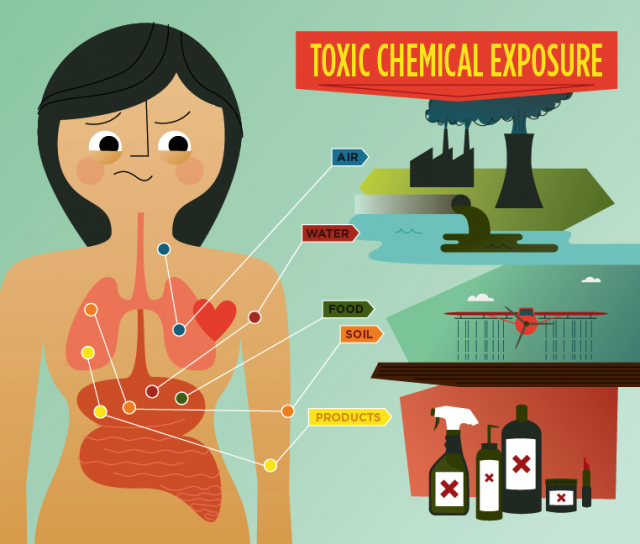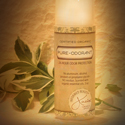
Scientists are observing with increasing alarm that some very common hormone-mimicking chemicals can have grotesque effects.
A widely used herbicide acts as a female hormone and feminizes male animals in the wild. Thus male frogs can have female organs, and some male fish actually produce eggs. In a Florida lake contaminated by these chemicals, male alligators have tiny penises.
These days there is also growing evidence linking this class of chemicals to problems in humans. These include breast cancer, infertility, low sperm counts, genital deformities, early menstruation and even diabetes and obesity.
Philip Landrigan, a professor of pediatrics at Mount Sinai School of Medicine, says that a congenital defect called hypospadias — a misplacement of the urethra — is now twice as common among newborn boys as it used to be. He suspects endocrine disruptors, so called because they can wreak havoc with the endocrine system that governs hormones.
Endocrine disruptors are everywhere. They’re in thermal receipts that come out of gas pumps and A.T.M.’s. They’re in canned foods, cosmetics, plastics and food packaging. Test your blood or urine, and you’ll surely find them there, as well as in human breast milk and in cord blood of newborn babies.
In this campaign year, we are bound to hear endless complaints about excessive government regulation. But here’s an area where scientists are increasingly critical of our government for its failure to tackle Big Chem and regulate endocrine disruptors adequately.
Last month, the Endocrine Society, the leading association of hormone experts, scolded the Food and Drug Administration for its failure to ban bisphenol-A, a common endocrine disruptor known as BPA, from food packaging. Last year, eight medical organizations representing genetics, gynecology, urology and other fields made a joint call in Science magazine for tighter regulation of endocrine disruptors.
Shouldn’t our government be as vigilant about threats in our grocery stores as in the mountains of Afghanistan?
Researchers warn that endocrine disruptors can trigger hormonal changes in the body that may not show up for decades. One called DES, a synthetic form of estrogen, was once routinely given to pregnant women to prevent miscarriage or morning sickness, and it did little harm to the women themselves. But it turned out to cause vaginal cancer and breast cancer decades later in their daughters, so it is now banned.
Scientists have long known the tiniest variations in hormone levels influence fetal development. For example, a female twin is very slightly masculinized if the other twin is a male, because she is exposed to some of his hormones. Studies have found that these female twins, on average, end up slightly more aggressive and sensation-seeking as adults but have lower rates of eating disorders.
Now experts worry that endocrine disruptors have similar effects, acting as hormones and swamping the delicate balance for fetuses in particular. The latest initiative by scholars is a landmark 78-page analysis to be published next month in Endocrine Reviews, the leading publication in the field.
“Fundamental changes in chemical testing and safety determination are needed to protect human health,” the analysis declares. Linda S. Birnbaum, the nation’s chief environmental scientist and toxicologist, endorsed the findings.
The article was written by a 12-member panel that spent three years reviewing the evidence. It concluded that the nation’s safety system for endocrine disruptors is broken.
“For several well-studied endocrine disruptors, I think it is fair to say that we have enough data to conclude that these chemicals are not safe for human populations,” said Laura Vandenberg, a Tufts University developmental biologist who was the lead writer for the panel.
Worrying new research on the long-term effects of these chemicals is constantly being published. One study found that pregnant women who have higher levels of a common endocrine disruptor, PFOA, are three times as likely to have daughters who grow up to be overweight. Yet PFOA is unavoidable. It is in everything from microwave popcorn bags to carpet-cleaning solutions.
Big Chem says all this is sensationalist science. So far, it has blocked strict regulation in the United States, even as Europe and Canada have adopted tighter controls on endocrine disruptors.
Yes, there are uncertainties. But the scientists who know endocrine disruptors best overwhelmingly are already taking steps to protect their families. John Peterson Myers, chief scientist at Environmental Health Sciences and a co-author of the new analysis, said that his family had stopped buying canned food.
“We don’t microwave in plastic,” he added. “We don’t use pesticides in our house. I refuse receipts whenever I can. My default request at the A.T.M., known to my bank, is ‘no receipt.’ I never ask for a receipt from a gas station.”
I’m taking my cue from the experts, and I wish the Obama administration would as well.






